Related Research Articles

Louis Philippe I, Duke of Orléans, known as le Gros, was a French royal of a cadet branch of the House of Bourbon. The First Prince of the Blood after 1752, he was the most senior male at the French court after the immediate royal family. He was the father of Philippe Égalité. He greatly augmented the already huge wealth of the House of Orléans.
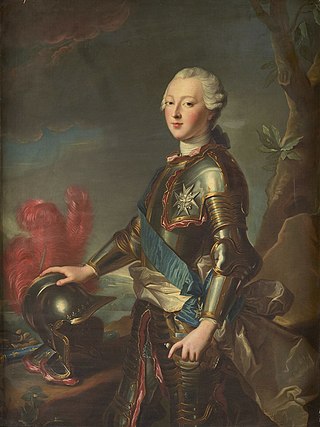
Louis Joseph de Bourbon was Prince of Condé from 1740 to his death. A member of the House of Bourbon, he held the prestigious rank of Prince du Sang.
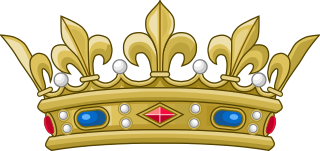
Fils de France was the style and rank held by the sons of the kings and dauphins of France. A daughter was known as a fille de France.

Marie-Jeanne [Rose] Bertin was a French fashion merchant. She was particularly noted for her work with Queen Marie Antoinette. Bertin was the first celebrated French fashion designer and is widely credited with having brought fashion and haute couture to the forefront of popular culture.

Marie Joséphine of Savoy was a princess of France and countess of Provence by marriage to the future King Louis XVIII of France. She was regarded by Bourbon royalist Legitimists as the titular 'queen of France' when her husband assumed the title of king in 1795 upon the death of his nephew, the titular King Louis XVII of France, until her death. She was never practically queen, as she died before her husband actually became king in 1814.
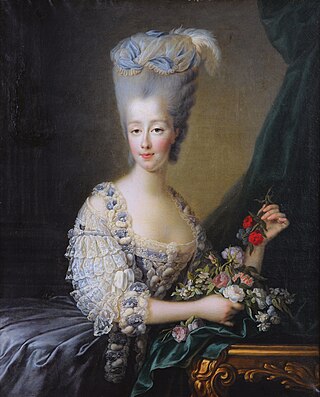
Maria Theresa of Savoy was a French princess by marriage to Charles Philippe, Count of Artois; he being the grandson of Louis XV of France, and younger brother of the future Louis XVI of France. Nineteen years after Maria Theresa’s death, her spouse assumed the throne of France as King Charles X. Her son, Prince Louis Antoine, married Marie Antoinette’s daughter Marie-Thérèse Charlotte, they being the King and Queen of France for approximately 20 minutes on 2 August 1830.
Marie Louise de Rohan, also known as Madame de Marsan, was the governess of Louis XVI of France and his siblings. She was an influential figure of the French court and a driving force of the Dévots and the conservative fraction of the court nobility.

Louis Alexandre de Bourbon was the son and heir of Louis Jean Marie de Bourbon, great grandson of Louis XIV by the king's legitimised son, Louis Alexandre de Bourbon. He was known as the Prince of Lamballe from birth. He pre-deceased his father, and died childless.
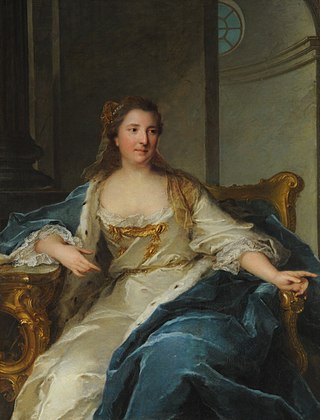
Princess Caroline of Hesse-Rheinfels-Rotenburg was Princess of Condé by marriage to Louis Henri, Duke of Bourbon.

Marie de Bourbon was the wife of Thomas Francis, Prince of Carignano, and thus a princess of Savoy by marriage. At the death of her brother in 1641, she became Countess of Soissons in her own right, passing the title down three generations of the House of Savoy.
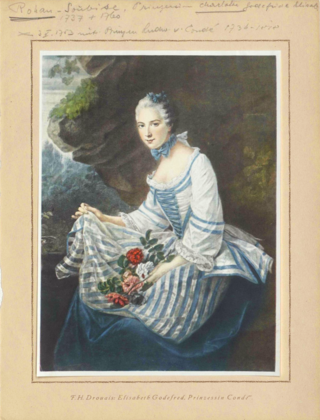
Charlotte de Rohan was a French aristocrat who married into the House of Condé, a cadet branch of the ruling House of Bourbon, during the Ancien Régime. She was Princess of Condé by her marriage. She has no known descendants today as her grandson, heir to the Condé family, died without children and her daughter remained childless. Charlotte was praised for being a cultured and attractive princess of her age.

Princess Christine of Hesse-Rheinfels-Rotenburg was a princess of the German dynasty of Hesse-Rheinfels-Rotenburg. She was the Princess of Carignano by marriage and mother of the princesse de Lamballe and of Victor Amadeus II, Prince of Carignan.
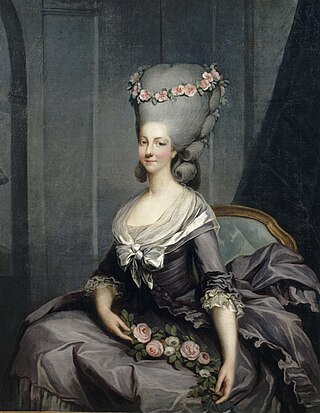
Marie Thérèse Louise of Savoy, Princesse de Lamballe was a member of the Savoy-Carignano cadet branch of the House of Savoy. She was married at the age of 17 to Louis Alexandre de Bourbon-Penthièvre, Prince de Lamballe, the heir to the greatest fortune in France. After her marriage, which lasted a year, she went to the French royal court and became the confidante of Queen Marie Antoinette. She was killed in the massacres of September 1792 during the French Revolution.
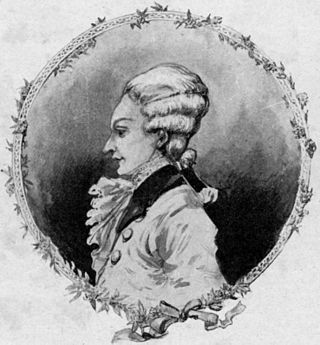
Léonard-Alexis Autié, also Autier, often referred to simply as Monsieur Léonard, was the favourite hairdresser of Queen Marie Antoinette and in 1788–1789 founded the Théâtre de Monsieur, "the first resident theatre in France to produce a year-round repertory of Italian opera."
Angélique-Marie Élisabeth Émilie de Matignon, née Le Tonnelier de Breteuil, married Countesse Goyon de Matignon and known in history as Madame de Matignon, was a prominent fashion figure during the French Ancien Régime, known for her extravagant hairdressing expenses.

A fashion merchant is a businessperson specialising in the production and the sale of fashion accessories, especially adornments for hairstyles and gowns. The profession emerged in the early eighteenth century and reached its height at the end of the 1700s. The women and occasional men who practised as fashion merchants played a central role in the diffusion of styles in this period.
Adélaïde Henriette Damoville was a French fashion merchant. She was a favorite milliner of Queen Marie Antoinette.
Jean Joseph Beaulard, known as Le Sieur Beaulard, was a French fashion merchant and fashion designer.
Marie Madeleine Duchapt, also known as only La Duchapt, was a celebrated French fashion merchant. Active from the 1730s to 1760s, she succeeded Françoise Leclerc as the leading marchande de modes in Paris. She has been referred to as the first famous fashion celebrity of the Parisian fashion business, and was a predecessor of Rose Bertin.
Mademoiselle Pagelle was a French fashion designer (Couturier) and fashion merchant.
References
- ↑ Langlade, Émile. Rose Bertin: Creator of Fashion at the Court of Marie Antoinette (London: John Long, 1913).
- Ariane James-Sarazin et Régis Lapasin, Gazette des atours de Marie-Antoinette, RMN, Paris, 2006, p. 11.
- De Adolphe de Fontaine de Resbecq, Ligaran, Voyages littéraires sur les quais de Paris